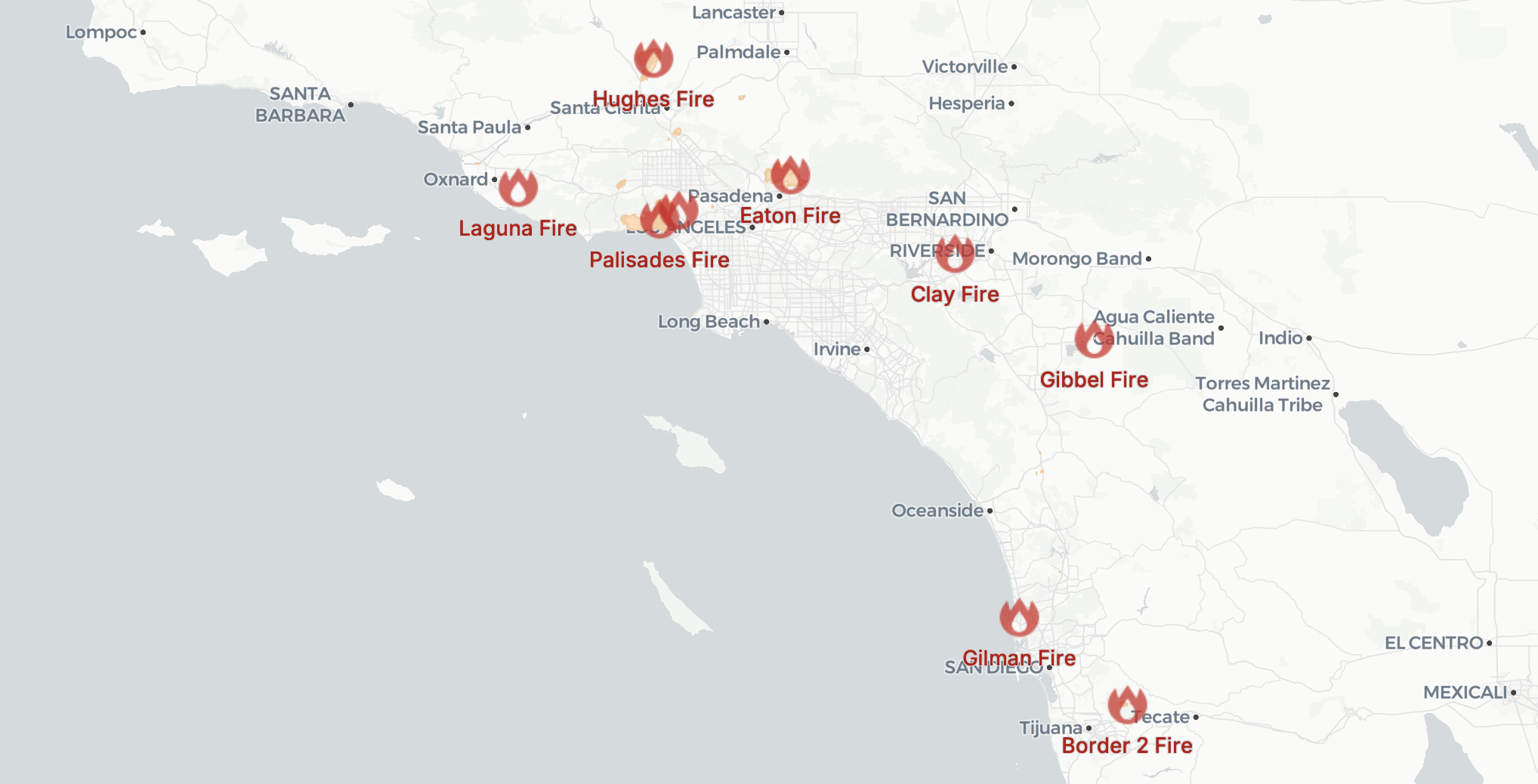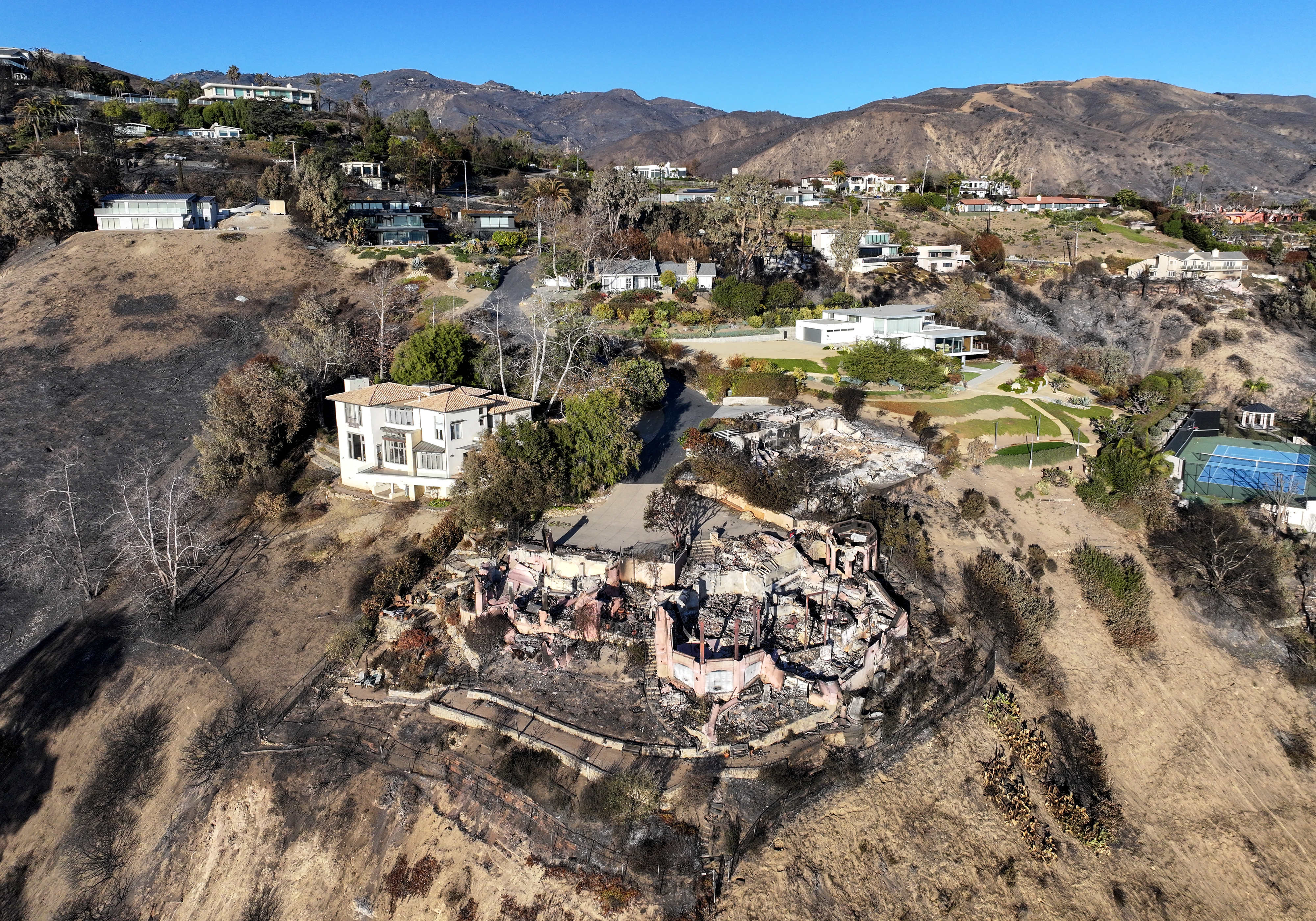Here is a timeline of the Eaton and Palisades fires in LA County
January 25, 2025
Here is a timeline of the Eaton and Palisades fires in LA County
The fires began on Jan. 7, 2025, on what seemed like a regular Tuesday morning, fueled by historic gusts of Santa Ana winds.
In the last two weeks, a series of devastating wildfires worsened by the Santa Ana winds, broke out in Los Angeles County. The flames have left many Angelenos without loved ones, homes, livelihoods, and the daunting question ringing in their minds that begs, “What comes next?”
So far, there have been 28 confirmed deaths and 15,467 structures destroyed, with those numbers expected to grow, according to Cal Fire.
Here’s a timeline breaking down how the most destructive wildfires from the past few weeks began: The Palisades Fire, in Pacific Palisades, and the Eaton Fire in the areas of Altadena and Pasadena.
Get top local stories in Southern California delivered to you every morning. Sign up for NBC LA’s News Headlines newsletter.
Jan. 7 – 10:30 a.m.
On Tuesday morning, a large dark plume of smoke appeared, swelling through the Malibu sky.
Although the blaze’s point of origin was located southeast of Palisades Drive in the Pacific Palisades area, the immense cloud of smoke shocked many residents throughout LA County as they watched at a distance.
These were the first moments captured of the Palisades Fire. At 11:06 a.m., records show that the fire began burning at 10 acres.
Jan. 7 – 12:30 p.m.
From about 11:00 a.m. to noon, a gridlock formed on Sunset Boulevard. This blocked people in traffic for miles as they desperately tried to evacuate and get away from the dangerous flames.
The Palisades Fire quickly expanded, consuming homes, cars, and anything in its path. In just an hour and a half, the fire grew to cover 200 acres. At this point, it could be seen burning both sides of the road on Palisades Drive.
As firefighters saw the rapid rate at which the blaze grew, an evacuation order was put in effect from the fire area down to Pacific Coast Highway. Simultaneously, the first evacuation center was established at the Westwood Recreation Center.
Additionally, several evacuation warnings were announced for other nearby areas.
Jan. 7 – 3:34 p.m.
At about 3:30 p.m.—just three hours later—the Palisades Fire had grown to six times its previous size. At this point in time it burned across 1,262 acres.
Jan. 7 – 6:18 p.m.
A few hours later, a new fire emerged in Altadena: the Eaton Fire.
The evacuations quickly began in this residential area as people in neighborhoods and nursing homes rushed to save their lives.
With no time to prepare, some went by foot and some by car, while the intensely strong winds made it difficult to stand, breathe, and see clearly.
Meanwhile, the flames swiftly spread and destroyed home after home in Pacific Palisades. These were fueled by wind gusts that could reach up to 80 miles per hour, according to the NWS’s predictions.
As the Eaton Fire began and firefighters scrambled to secure state and federal assistance, the Palisades Fire continued to burn through homes on the coast and challenge firefighters who battled the flames.
Extreme wind gusts posed an additional challenge for firefighters who simultaneously tried to contain two major fires.
Jan. 7 – 10:30 p.m.
As firefighters worked tirelessly to contain two major blazes on opposite sides of LA county, a third one emerged: the Hurst Fire, located in Sylmar, in the San Fernando Valley.
Burning a total of almost 800 acres, this fire remained active for eight days and was fully contained on Jan. 16, 2025.
Jan. 8 – 9:00 a.m.
Strong wind gusts continued to blow throughout Tuesday night, making it extremely difficult for firefighters to contain the flames and already leaving great devastation behind.
Wednesday morning, the Palisades Fire had quickly doubled in size as it burned through 2,921 acres. The list of human and animal evacuation shelters grew.
Similarly, the Eaton Fire now covered a stark 2,227 acres. Many people hurried to evacuate.
With every passing minute, the blaze engulfed more homes at an extremely swift rate pushed by the winds. All schools within the Pasadena Unified School District closed.
Jan. 8 – 1:21 p.m.
In just four hours, the Eaton Fire had grown five times in size. By midday, the devastating blaze burned through 10,600 acres of entire residential communities. Many neighborhoods, schools, and nursing homes were destroyed by the flames.
Meanwhile, Cal Fire urged residents to remain alert and monitor the Red Flag warning due to the extreme wind conditions expected to continue until Thursday.
On the other side of the county, the Palisades Fire devastatingly burned across 15,832 acres. By that time, 300 structures in the area had been destroyed and about 13,000 of these were considered threatened.
State and federal teams of first responders worked aggressively to attempt to contain the blaze.
A total of 836 firefighters and seven helicopters strove to make progress under severe weather conditions that worked against them.
Jan. 8 – 11:00 p.m.
As the clock nearly reached midnight, the first two civilian fatalities were reported. In the days that followed, the death toll investigated by the Medical Examiner’s Office continued to climb.
Heartbroken Angelenos mourned not only the loss of their homes and communities but also their loved ones.
With uncertainty on the horizon, multiple other school districts also remained closed until Jan. 9 and 10.
Meanwhile, a “do not drink your water” warning was issued. Folks who had evacuated and lived in areas serviced by the Pasadena Water and Power water system were warned to avoid drinking tap water until further notice.
Just before midnight on Wednesday night, the Palisades Fire had grown a couple thousand acres more. Now it covers an immense area of 17,234 acres.
Numerous firefighting teams from across California continued to work non-stop on containing and extinguishing the flames, hoping to soon see a light at the end of the tunnel for these devastating fires.
Fires still active
More than two weeks later, up to Jan. 24, the Palisades Fire has burned 23,448 acres and is currently at 77% containment. Meanwhile, the Eaton Fire has burned 14,021 acres and is now at 95% containment, according to Cal Fire.
The two fires combined have burned nearly 40,000 acres and continue to challenge first responders as they work to contain and extinguish them.
These are just two of nine active fires in California.
The region is under severe to extreme drought conditions after a dry start to the wet season in Southern California. After two seasons of above-average rainfall, a months-long dry spell left hillsides covered in dry brush, providing fuel for wildfires.
Under a red flag warning, any fires that do start are more likely to spread at a rapid rate behind strong winds. Flying embers also speed up a brush fire’s spread. Powerful gusts can cast hot embers for miles, starting spot fires ahead of the main fire line in a nightmare scenario for firefighters.
Search
RECENT PRESS RELEASES
Related Post






